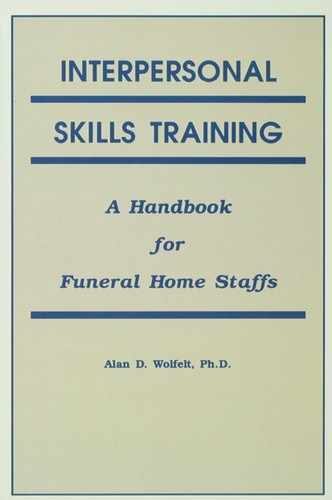SKILL THREE: CLARIFYING
a. Clarifying is the process of bringing vague content in the interaction into clearer focus or understanding.
b. Clarifying goes beyond paraphrasing because you make a guess about the person’s basic message and restate it.
2. IDENTIFY PURPOSES FOR USING THE SKILL
a. To allow you to clear up vague and confusing messages. In other words, it helps you make sense of what someone has said.
b. To enable both you and the person you are trying to help to have an increased understanding of what is being said.
c. To communicate to the person that you are trying to understand his or her basic message. You are listening; you are aware and concerned.
3. ENHANCE UNDERSTANDING OF THE SKILL
When people are experiencing grief, communicating clearly becomes naturally difficult. The funeral director who learns to clarify skillfully can work to better understand the person through the use of this skill. When a person is in shock and disoriented he or she will usually have some trouble getting thoughts and feelings to flow from his or her head and heart.
The task of the funeral director becomes one of gently and artfully clarifying any confusing communication. Again, be careful not to interpret meaning, instead focus solely on clarifying. Be sure to state your clarifying remarks in terms of your own feelings of confusion, thereby avoiding any implications of criticism.
Again, remember that people experiencing grief are naturally confused. Also, keep in mind that the confusion might, in part, be due to your own inattention to what the person is saying. You can simply ask the person to restate what was said, ask for an example, or offer a paraphrase for the person to confirm your understanding. This skill will come with practice and you will probably find yourself using it more than you think.
4. ILLUSTRATE THE USE OF CLARIFYING
After a period of confusing discussion in which you have found difficulty understanding, you might say, “I’m confused, let me try to state what I think you were trying to help me understand.” (You would then go on to attempt to paraphrase what you think the person was saying.) They would then either confirm or clarify any misperceptions you might have had.
After a period of confusing discussion that you have found difficult to understand, you might say, “I’m not real sure I understand, maybe we can go over this again.” (You would simply slow down and review what was just discussed.)
After a period of confusing discussion that you have found difficult to understand, you might say, “I’m lost, could you tell me more?” (You encourage the person to expand on what he or she said to so as to assist you in understanding.)
a. The result should be clearer statements and increased understanding on the part of the person you are attempting to help.
b. The person senses your attempt to help.
c. Clarifying encourages continued verbalization of thoughts and feelings.
Trainer will do any additional role-play modeling to enhance the ease of learning for participants.
GROUP REHEARSAL WITH TRAINER CLARIFYING
Directions
The trainer will talk in a rambling fashion to the group about any topic. The task is for everyone to listen and when a natural break occurs anyone can offer a statement of clarification.
This will allow everyone to practice in the group setting in a non-threatening environment. The trainer will provide immediate feedback on the statement of clarification and make any suggestions for improvement. This activity also allows participants to observe that often more than one way is appropriate for seeking clarification. Participants will be encouraged to ask follow-up questions and clarify any mis-understanding related to this important skill.
ACTIVITY 8.2
TRIAD BREAK-OUT REHEARSAL CLARIFYING
Directions
Work in triads. One person (speaker) should talk freely for five minutes about any topic of interest. The speaker will intentionally make some rambling statements that are difficult to understand. The second person (helper-listener) to whom he or she is speaking will concentrate on using the skill of clarifying. The third person (observer) will be available to provide follow-up feedback on the appropriateness of the statements of clarification.
Each member of the triad will rotate through each of the three roles: speaker, helper-listener, and observer. The trainer will circulate throughout the room and be available for questions or concerns.
Again, this activity will provide immediate feedback as participants work to develop this skill.
7. SUMMARIZE AND LIST GUIDELINES FOR THE SKILL
8. NOTES OR QUESTIONS YOU HAVE FOR THE TRAINER RELATED TO THE SKILL
